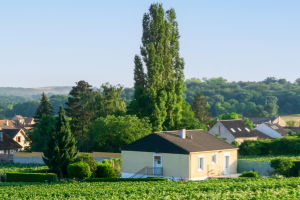For all the Lykkers seeking unique adventures off the beaten path, Banaue offers an unforgettable glimpse into the soul of the Philippines.
Nestled in the northern highlands of Luzon, this town may not charm with grand monuments or shiny streets, but it captures the imagination with its dramatic landscapes, resilient people, and a rhythm of life unlike anywhere else.
Though often seen as a brief stop for travelers, Banaue deserves much more than a quick visit.
Arriving in Banaue
How to Get There
From Manila, the most convenient way to reach Banaue is by overnight bus. Several operators run nightly routes departing around 9–10 PM, arriving in Banaue between 7 and 8 AM. This journey takes approximately 9–10 hours.
Popular bus companies include Ohayami and Coda Lines. Advance booking is recommended, especially during peak season.
Cost of Travel
An overnight bus ticket from Manila to Banaue costs between ₱700 and ₱1,000 (approximately $12–18), depending on the operator and seat type.
First Impressions of Banaue
A Town Balanced Between Earth and Sky
Banaue is perched on steep terrain where homes appear to cling to the hillsides with determination. Its architecture may seem improvised, with a patchwork of concrete and tin rising against a backdrop of cloud-touched peaks.
A Sense of Life in Motion
The streets bustle with jeepneys and tricycles that thread through narrow bends like ribbons laid across the mountainside. There is noise, color, and constant movement.
Warm Local Hospitality
Locals wave from balconies or windows, offering smiles and assistance with directions or tips. There's a strong sense of community that resonates even in brief encounters.
The Famous Rice Terraces
UNESCO-Recognized Landscapes
Just 4 km from the town center lie the Banaue Rice Terraces, often called the “Eighth Wonder of the World.” Carved into the mountain slopes more than 2,000 years ago, these terraces reflect the deep relationship between land and farming.
A walk from town along the valley’s edge leads directly to these emerald stairways.
Getting Around
While it’s possible to hike to the terraces on foot, visitors can also hire a tricycle or hop on a jeepney by simply flagging one down. Expect to pay about ₱100–150 for a short ride.
More Than Just a Stopover
Beyond the Terraces
Banaue is often seen as a launch point to nearby areas like Batad and Hapao, both renowned for their own spectacular terraced landscapes. However, Banaue itself has charm that becomes more apparent with time.
The streets, though modest, are alive with energy, and the town center includes local shops and markets full of daily life.
Where to Stay
Accommodations in Banaue are simple and affordable. Most guesthouses and inns charge around ₱800–1,200 per night ($14–22), depending on the view and amenities. Popular spots include Native Village Inn and Banaue Hotel, both offering impressive views and easy access to trails.
Dining Local
The local dish pancit with seafood—a stir-fried noodle specialty—is widely available and makes for a comforting, tasty meal after a hike, costing around ₱50–₱80 (about $1–$1.50). Small eateries line the town’s main road, and a food stall in the main square serves grilled corn on the cob from morning to late evening for just ₱20 (less than $0.50).
Tips for Travelers
Money Matters
There are no ATMs in Banaue, and credit cards are not commonly accepted. Bring enough cash before arriving. Currency exchange is available at the Central Market’s upper floor.
Tour Assistance
The tourism office, located right where the bus drops passengers, is helpful and welcoming. Upon arrival, visitors pay a small environmental fee of ₱20 (less than $0.50). Staff at the office can assist in organizing guided tours to Batad, Hapao, or even further destinations like Sagada or Baguio.
Transport Within Town
Public transportation is informal but efficient. Tricycles and jeepneys are easy to catch, and locals are always ready to help navigate.
To Conclude
Banaue may not present itself with grandeur, but it offers a raw, authentic experience filled with natural wonder and human warmth. To the Lykkers seeking true adventure and deep cultural connection, this mountain town offers more than a starting point—it offers perspective. Linger longer than expected, and Banaue will reward with stories etched into the terraces and smiles rooted in the mountains.


